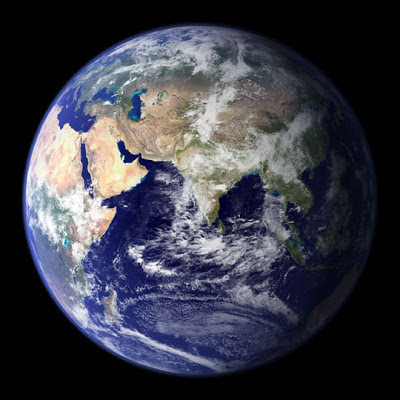Blue Marble
It’s the fortieth anniversary of the Apollo 17 astronauts’ famous photo of earth from space, the Writer’s Almanac tells me. It was the first time our planet was photographed whole and entire, its mountains and deserts and oceans in clear relief. Clouds like tufts of baby’s hair after a bath, when you comb it, still wet, into ridges and whorls.
It is a snapshot in time — a cyclone forms over the Indian Ocean — but so much more. It is our own precious, fragile earth. And it was the last time humans would be in a position to photograph it. (Robots were in charge of subsequent lunar missions.)
Just coincidentally, the Writer’s Almanac informs me that today is also the birthday of writer Willa Cather, who said, “We come and go but the land is always here. And the people who love it and understand it are the people who own it — for a little while.”
When we see our planet from space, how can we not love it more? Not just our own corner of it, but all of it. How can we not want to do everything we can to protect it?
Photo: NASA

One thought on “Blue Marble”
Thanks for this refreshing perspective on Pearl Harbor Day. With Gene Cernan and Willa Cather, we could add Joseph Campbell to the mix.
I saw him speak once in SF, circa 1983. In his eighties, he lectured without notes for two hours or so. His slides concluded with an astronaut's image of the earth from space, I think the one you've chosen, but smaller in the vastness. It was his answer to the question he had been asked so many times. If the controlling myth of western culture is dead, where do we look? What is the new myth? The image of the fragile earth from space was the symbol for Joseph Campbell.
In the 30 intervening years, his perception–odd and contretemps as any artist's–only glows hotter over time.